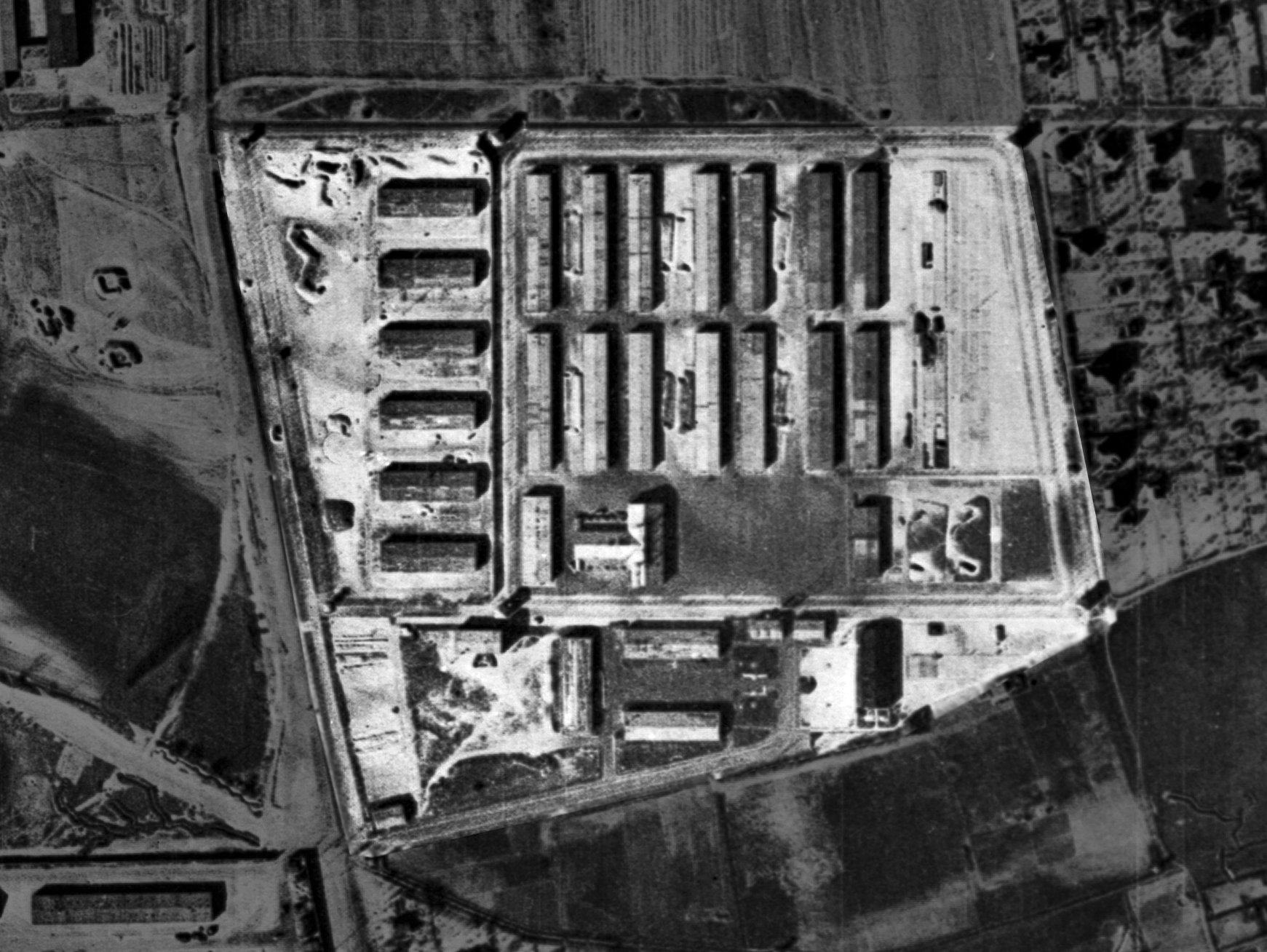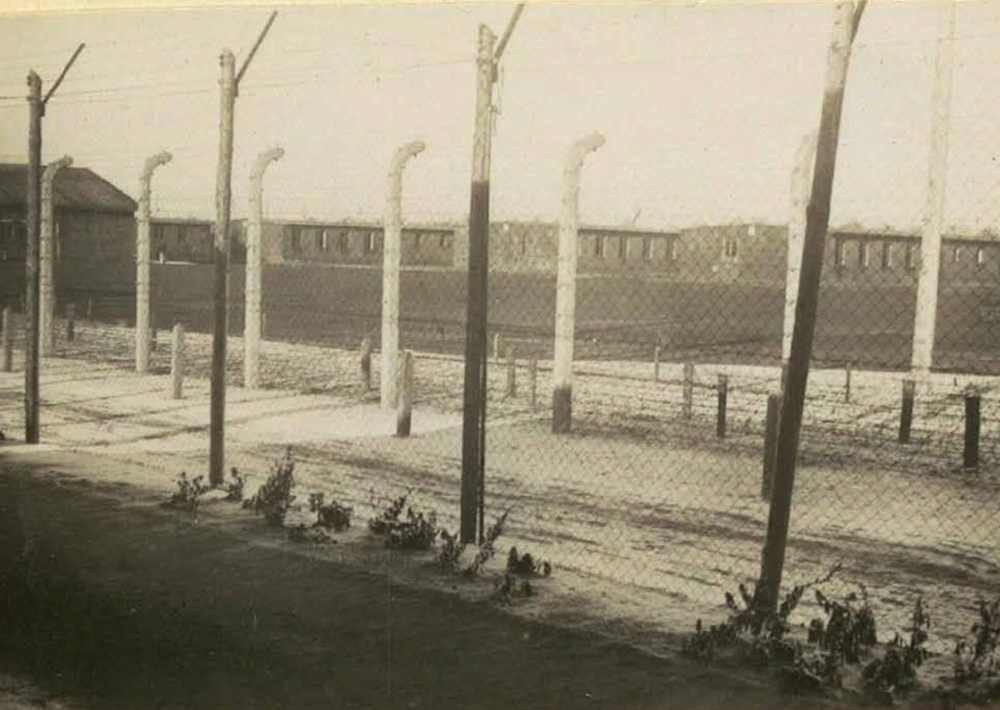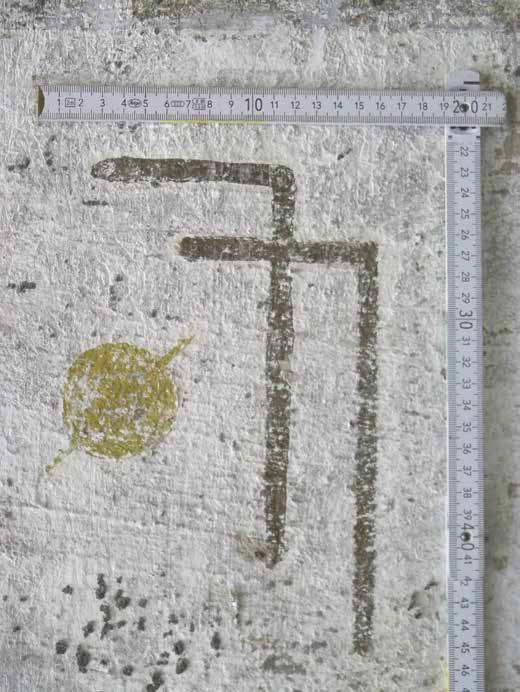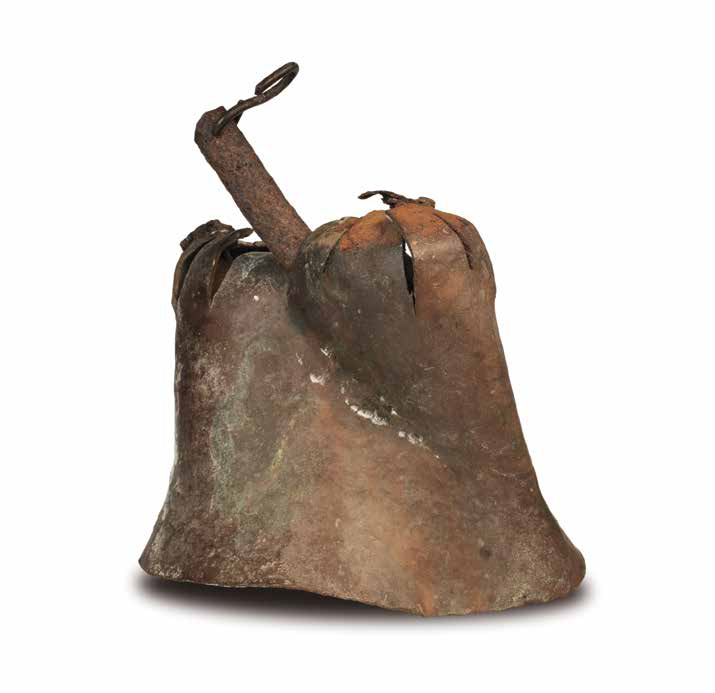Creation
of the Falkensee subcamp

Note: The
photos have not yet been released for the Internet under copyright law! Aerial photo of the
Falkensee subcamp from April 19, 1945. Source: State air
image collection point of the state survey and basic geo information
Brandenburg
In the summer of
1943, the first prisoners moved into the Falkensee subcamp. With the increasing
air raids on Berlin, the danger of fires in the forced camps increased.
Therefore, the architect Wilhelm Fricke designed massive stone buildings. His
design was strongly based on the barracks in Sachsenhausen concentration camp,
which he had visited on December 2, 1942. He developed a floor plan and the
furnishings of the building. The accommodation buildings were constructed as
double barracks, ten meters wide and sixty meters long, made of slag concrete
blocks, which comprised two separate functional units, each with two bedrooms,
two day rooms, a washroom, a toilet room and a hallway. As can be seen from a
structural history study, the camp was equipped with a long-distance heating
system. The walls of the hallways and day rooms were decorated with stencil
painting. In October 1943,
the camp comprised 14 such accommodation buildings, one of which was used,
among other things, as an infirmary and four as production facilities. There
was also a kitchen building, a bathroom with disinfection and an office. The
barracks for SS guards stood right at the entrance to the camp. The concentration
camp was originally planned for a total of 5,000 prisoners, but only part of it
was actually carried out. The maximum occupancy of the camp is documented in
the summer of 1944 with 2,584 prisoners.
A photo of the camp
from 1944 with the double-row electric camp fence and a view of the roll call
square. Source: Federal
Archives, records by Rudolf Dörrier The stencil
painting, presumably from the time of the camp, is located in the southern day
room of the barracks on the central wall. The photo comes from a building
history study from 2017. Source:
Documentation Schulz + Drieschner GbR, fig. no. 77, photo: B. Schulz 03/14/2017 Photo of the camp
bell. The original was privately recovered after the liberation in April 1945
and can now be seen in the permanent exhibition in the Falkensee Museum and
Gallery. Source: Falkensee
Museum and Gallery / Marcel Blank










